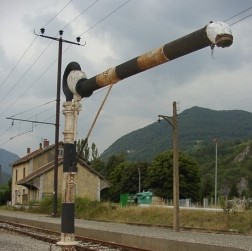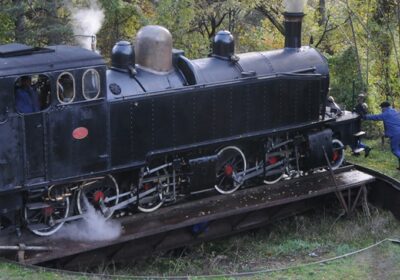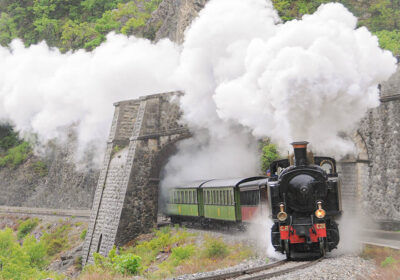It took almost 30 years to build the entire line, from 1883 to 1911. Many infrastructures were built to adapt to the topography of the valleys crossed by the Chemins de fer de Provence.
There are 27 underground passages on the line between Nice and Digne, divided into 25 tunnels and 2 covered cuts.
They were built between 1883 and 1911. Progressive work on the tunnels allowed portions of the line to be opened to traffic little by little, and it was fully opened in 1911.
The total length of the tunnels is 11 kilometers, the longest of them is 2457 meters and is located between the stop of Peyresq and the station of Thorame-Haute, under the Colle-Saint-Michel.
The construction of these tunnels, dug right into the rock, required ambitious engineering for the time. The terrain proved to be dangerous for many tunnels, requiring frequent maintenance operations following rock falls and partial collapses. The Moriez tunnel collapsed in 2019. Still under construction today, its return to service takes time, the work undertaken being titanic to meet the drastic but necessary safety today standards.
However, most of the tunnels are in good condition and allow the train to cut through the mountains and avoid sharp curves that would lengthen the journey time.
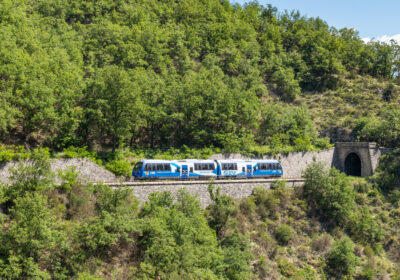
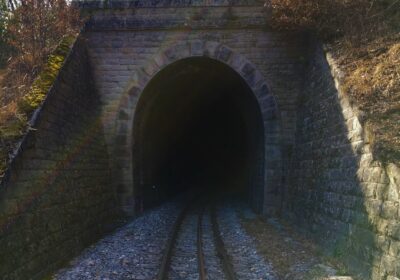
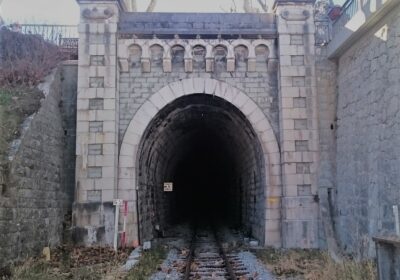

Bridges and viaducts
Rivers, caves, canyons, roads and ubac are all reliefs to cross. The railroad cannot afford to have too many ascents and descents, the maximum authorized difference in level is 24mm/meter, bridges and viaducts allow to avoid the ground distortions.
The line has 687 spanning structures, which also includes the smallest aqueducts of only one meter. Focusing on the main structures, there are 102 masonry or metal bridges that make up the Chemins de fer de Provence line.
Near the ends of the line, i.e. the first portions that were opened, metal bridges were favored. Their construction is faster and less expensive. As the work progressed, the architects encouraged the use of masonry bridges. The construction cost is higher but they do not wear out, unlike steel which must be maintained. They present less weight constraints (steel bridges are designed for the machines planned at the time, if their size and weight change, the steel bridge will also have to be changed).
The Mescla metal bridge was atypical (before its destruction by the Germans) when both trains and cars could use it.
Another curiosity, the masonry bridges are all made of several arches except for one: the Quarante Mètre bridge (it is its name) which has only one arch whereas it is only 10 meters high.
Several structures near the towns of Nice and Digne-les-Bains were bombed during the war and had to be rebuilt.
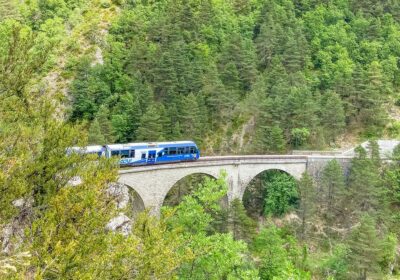


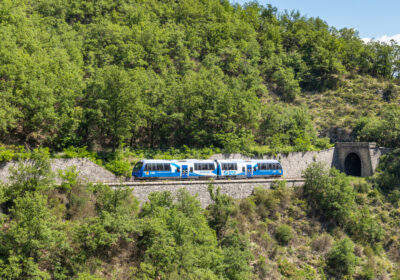
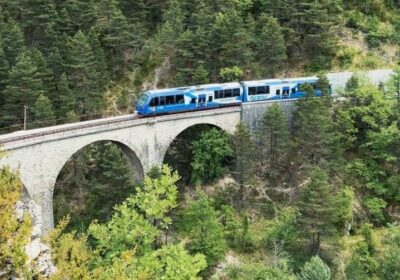

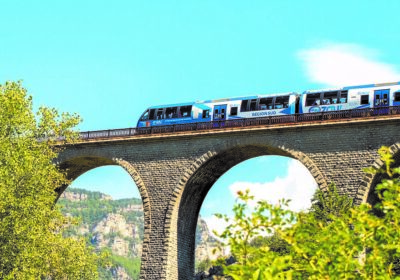

Memories of steam
Steam train infrastructures have survived in the vicinity of the tracks. For example, you can see hydraulic cranes in some stations. These water pumps were used to power the steam engine. Another curiosity still visible is the turntable.
It allowed the locomotive to turn around and move to the back of the train which then became the front of the train. Today, railcars have driving positions on each side and do not need to turn around.
Some turntables are still used by the GECP with the Train des Pignes à Vapeur in Puget-Théniers, Annot or Le Fugeret.
